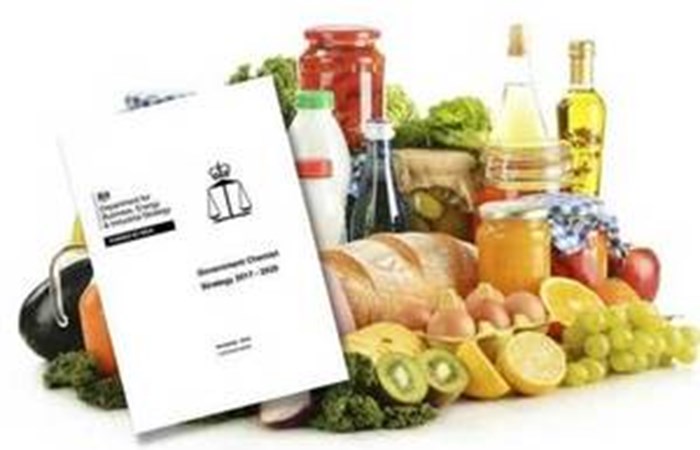govt

The following lists of standards were published by the European standardisation organisation, CEN, during the period September to November 2017, some of which are relevant to chemical measurement in support of regulation.
Fertilizers
EN 13368-2:2017 - Fertilizers - Determination of chelating agents in fertilizers by chromatography - Part 2: Determination of Fe chelated by [o,o] EDDHA, [o,o] EDDHMA and HBED, or the amount of chelating agents, by ion pair chromatography.
Plants can suffer from iron deficiency known as iron chlorosis (usually identified as a light yellow or green tint on new leaves), which inhibits their growth. This can occur despite iron being present in the soil because the iron is in an inaccessible form. The addition of fertilizers known as iron chelates, a water soluble product obtained by chemical reaction of iron with chelating agents, can be added to the soil to provide soluble iron that can then be taken up by the roots of the plant.
The production of fertilizers is controlled by EU Regulation 2003/2003 which specifies that an iron (Fe) chelate must have a minimum content of 5 % water soluble iron, of which the chelated fraction is at least 80 % and the iron chelated by each chelating agent with each fraction exceeding 2 % where there is a list of permitted chelating agents based on sodium, potassium or ammonium acid or salts of: ethylenediaminetetraacetic acid (EDTA) and other chelating agents for micronutrients to be identified and quantified by European Standards EN 13368 part 1 and part 2.
EN 13368-2 describes a method using an ion-pair chromatography to identify and determine the total concentration of water soluble iron chelates formed by the individual ortho(hydroxy)-ortho(hydroxy) isomer of the chelating agents [o,o] ethylenediamine-di (o-hydroxyphenyl acetic) acid (EDDHA), [o,o] ethylenediamine-di (o-hydroxy-o-methylphenylacetic) acid (EDDHMA) and by (N,N-bis(2-hydroxybenzyl)-ethylenediamine-N,N-diacetic acid (HBED) in fertilisers containing one or more of these substances, except for [o,o] EDDHMA and HBED mixes.
EN 13368-2:2017 revises EN 13368-2:2012 to include the calculation of the mass fraction of the chelating agent, a new option for preparing Fe-[o,o] EDDHA solution from standards, the complete names of chelating agents and additional precision data from an inter-laboratory trial that took place in 2014.
Animal Feed
EN 17050:2017 - Animal feeding stuffs: Methods of sampling and analysis - Determination of iodine in animal feed by ICP-MS
Iodine is an essential trace element for humans and animals which is naturally present in some foods but can be added as a dietary supplement. Iodine is an essential component of the thyroid hormones thyroxine (T4) and triiodothyronine (T3). Thyroid hormones regulate many important biochemical reactions, including protein synthesis and enzymatic activity, and are critical determinants of metabolic activity.
EN 17050 is based on EN 15111 which describes the determination of iodine in food. In both standards the iodine is extracted from the sample matrix using a strong alkaline solution of tetra methyl ammonium hydroxide (TMAH) at high temperature over a specified period. The iodine in the extract is then determined by ICP-MS (inductively coupled plasma mass spectrometry).
It is stated that the concentration range for method EN 17050 shown for the following types of animal feeds: seaweed meal, mineral premix, fish meal, plant based ingredient, marine based compound feed and a synthetic iodine solution is between 0.70 to 631 mg/kg.
EN 17050 has been developed in accordance with European Commission Mandate M/522to prepare standards for methods of analysis in the field of animal nutrition part II, implementing the framework of Regulation (EC) No 882/2004 on official controls performed to ensure the verification of compliance with feed and food law, animal health and animal welfare rules.
EN ISO 12099:2017 - Animal feeding stuffs, cereals and milled cereal products - Guidelines for the application of near infrared spectrometry (ISO 12099:2017)
EN ISO 12099:2017 is an adopted ISO standard by CEN and provides guidance on the determination of moisture, fat, protein, starch and crude fibre in animal feeding stuffs, cereals and milled cereal products using spectrometric measurements in the near infrared (NIR) spectral region.
Food
CEN/TS 17061:2017 - Foodstuffs - Guidelines for the calibration and quantitative determination of pesticide residues and organic contaminants using chromatographic methods.
CEN/TS 17061 provides guidance on the calibration, determination and quantitative evaluation of pesticides and organic contaminants in residue analysis using chromatographic procedures. The technical specification describes the principles to be followed to enable the comparison of analytical results (even from different analytical procedures) and can form the basis for method validation and quality assurance within laboratories.
CEN/TS 17062:2017 - Foods of plant origin Multi method for the determination of pesticide residues in vegetable oils by LC-MS/MS.
CEN/TS 17062 describes the analysis of pesticide residues present in plant oils (fat content > 90 %, water content < 5 %). The pesticide residues are removed from the plant oil using acrylonitrile solvent. The acrylonitrile solvent extract is then cleaned up using dispersive solid phase extraction. The solvent extract is acidified and then can be directly analysed using liquid chromatography coupled to two mass spectrometers in tandem (LC-MS/MS).
The method has been validated in an inter laboratory trial using olive oil and considered applicable to other similar types of oils including sunflower seed oil, sesame oil, flax seed oil, rape seed oil, grape seed oil, thistle oil and pumpkin seed oil
*A Technical Specification (TS) is an alternative normative document to a European Standard (EN) providing specifications for methodologies and/or evolving technologies.
Further information on food legislation can be found on the Government Chemist website:
